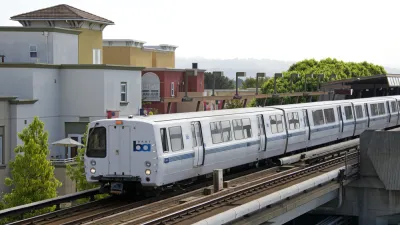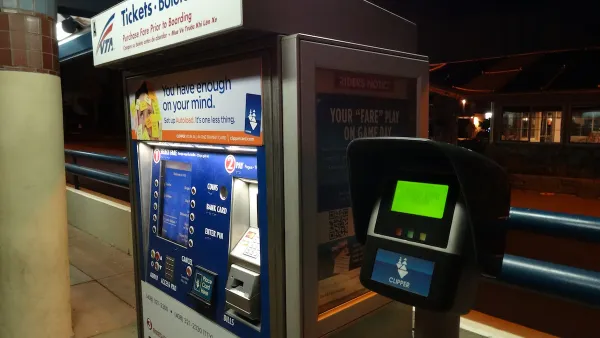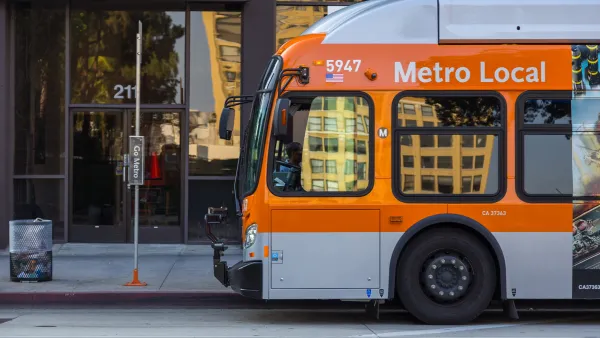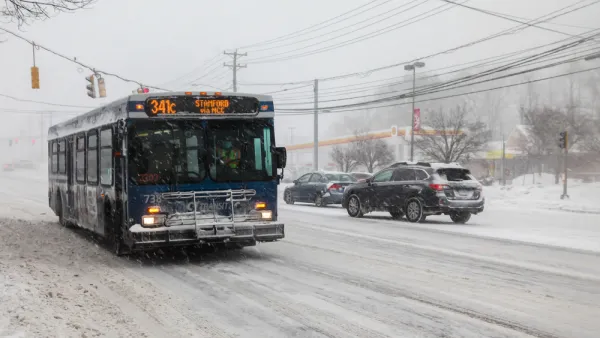With 27 transit agencies, traveling across the Bay Area can be a daunting task. Advocates for 'seamless transit' want to change that.

A blog post from TransitCenter explains the San Francisco Bay Area's complicated transit system, which boasts 27 different agencies across nine counties.
The introduction of the Clipper Card in 2002 was intended to help. For the first time, riders could use the same payment card for rides across the region. But the technology alone wasn’t enough to solve the problem. To this day, riders whose trips require them to use multiple agencies still face a penalty – interagency transfers are only sparingly accepted, and most agencies don’t coordinate their schedules, creating long waits between transfers.
Thanks in part to advocacy from a group calling itself Seamless Bay Area, a proposed state bill dubbed the "Seamless Transit Transformation Act" would mandate an integrated fare structure by 2024 and require transit agencies to coordinate schedules, service, and maps in order to receive state funding. "With the Bay Area’s infamous housing costs continuing to push people further from employment centers and ridership slow to recover from the pandemic, the initiative could be the key to bringing back riders, and making transit a viable option for tens of thousands more people," the blog states.
"There have been various attempts at fare integration over the last several decades, but the efforts haven’t been resourced or coordinated enough to be successful." To find out why, "According to [Seamless’s Advocacy Director, Adina Levin], Seamless looked at where previous integration efforts had fallen short, and brought in equity-focused groups and elected officials to the task force process and accompanying outreach in order to increase the likelihood of success." The organization has focused on developing a plan to integrate the dozens of agencies under one umbrella, with questions of logistics and revenue share still to be decided.
FULL STORY: Towards a Seamless Bay Area

Analysis: Cybertruck Fatality Rate Far Exceeds That of Ford Pinto
The Tesla Cybertruck was recalled seven times last year.

National Parks Layoffs Will Cause Communities to Lose Billions
Thousands of essential park workers were laid off this week, just before the busy spring break season.

Retro-silient?: America’s First “Eco-burb,” The Woodlands Turns 50
A master-planned community north of Houston offers lessons on green infrastructure and resilient design, but falls short of its founder’s lofty affordability and walkability goals.

Test News Post 1
This is a summary

Analysis: Cybertruck Fatality Rate Far Exceeds That of Ford Pinto
The Tesla Cybertruck was recalled seven times last year.

Test News Headline 46
Test for the image on the front page.
Urban Design for Planners 1: Software Tools
This six-course series explores essential urban design concepts using open source software and equips planners with the tools they need to participate fully in the urban design process.
Planning for Universal Design
Learn the tools for implementing Universal Design in planning regulations.
EMC Planning Group, Inc.
Planetizen
Planetizen
Mpact (formerly Rail~Volution)
Great Falls Development Authority, Inc.
HUDs Office of Policy Development and Research
NYU Wagner Graduate School of Public Service




























